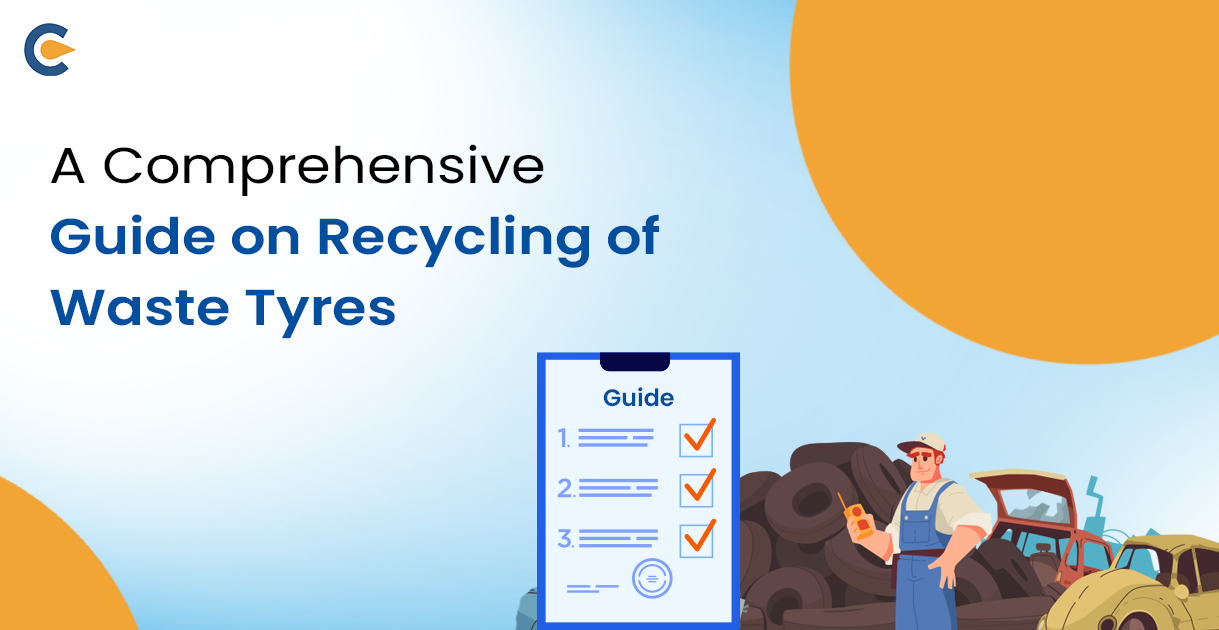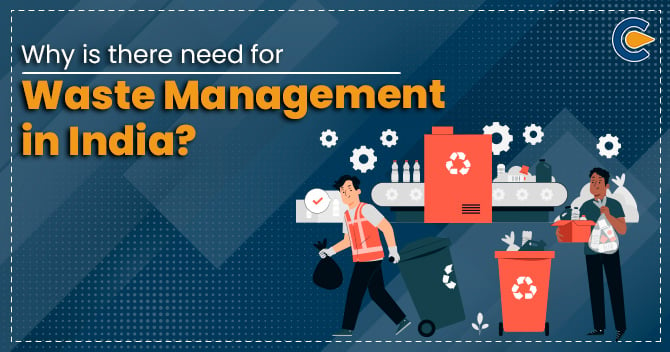For the recycling of waste tyres, continuous tyre pyrolysis plants were investigated with specialists from IIT Delhi and NEERI. With the assistance of SPCBs, more research on 70 TPO units was completed. The study found that the continuous tyre pyrolysis process and the advanced batch automated process (ABAP) exhibited compliance with work zone restrictions and had no appreciable effect on ambient air quality.
The study also found that the current batch of TPO Units requires certain additional features, like a PLC-based control arrangement, a bypass arrangement for pyro gas from the reactor door to the primary condenser, the installation of gas sensors, pressure and temperature gauges at the reactor and storage tank, a gas and fire alarm system, the ability to flare all of the pyro gas during an emergency, a system for recirculating the pyro gas for the reactor’s heating, water sprinkler system, and a mechanised arrangement for removing steel scrap and charred material for recycling of waste tyres. These are necessary to address safety and environmental concerns.
In the same case, the Hon’ble NGT ordered in an order dated October 25, 2021, to issue a suitable Statement of Purpose (SoP) covering the following topics: carrying capacity; effluent standards; emissions standards; standards for hazardous or other waste; and safety aspects to prevent accidents and protect public health. Consequently, the current SoP was modified regarding the recycling of waste tyre scrap for the recovery of tyre pyrolysis oil, pyro gas, and charcoal in the tyre pyrolysis oil (TPO) unit after expert members from NEERI & IIT-Delhi were consulted.
What is the Pyrolysis process for the recycling of waste tyres?
Pyrolysis is a process of heat deterioration that is done in a vessel or chamber without oxygen or air to prevent material combustion for the recycling of waste tyres. It is a process wherein organic molecules undergo thermal degradation into simpler compounds in an oxygen-free atmosphere between 400 and 500 °C.
The end products of thermal breakdown exist in all three phases, solid, liquid, and gas, because they are released at various temperatures and have distinct molecular structures. Steel, char, pyrolysis oils, and pyrolysis gas (pyro-gas) are produced during the pyrolysis of tyres and rubber goods. The following are the byproducts of tyre pyrolysis:
A) Pyro Gas: Usually, 20 to 35 per cent of the energy content of a tyre is transformed into pyro gas, a flammable gas that either powers the pyrolysis process or is burned in a flare prior to discharge. H, HS, CO, CO, CHa, CHa, CaHs, and other light hydrocarbons are commonly found in pyro gas.
B) Pyro Oil: Between 35 and 50 per cent of the process’s output is converted into a liquid product with a quality range that includes lower-quality oil mix stock and saleable fuel oil.
C) Char: Known as the remaining solid product, char is a combination of carbon, silica, titanium dioxide, zinc, steel, and other materials that makeup 25 to 40 per cent of the output.
D) Steel: During the process of pyrolysis, the thin wire required to strengthen tyres is retrieved, gathered, and sold as scrap steel on the market.
Pyrolysis process for Recycling of Waste Tyre
Rubber tyre waste may be converted into valuable goods, heat, and electrical energy through the ecologically and financially appealing process of pyrolysis for recycling of waste tyres. Pyrolysis is the term used to describe the heat breakdown of used tyres, either with or without oxygen. Pre-treated tyre chips from cars, buses, or trucks are the input raw materials used in pyrolysis. Because scrap tyres have a high calorific value that is equivalent to that of coal and crude oil, they make great fuel.
Tyres that have been cut in half, shredded, or left whole are heated in a reactor that has a heat source and no oxygen in it for recycling of waste tyres. This process is known as pyrolysis. The rubber is softened in the reactor, and then the rubber polymers break down into smaller molecules, which finally evaporate and come out of the reactor. These vapours can be condensed into an oily liquid known as pyrolysis oil or bio-oil, or they can be burnt directly to generate energy.
Certain molecules are too tiny to condense into a gas that can be burnt for energy. About 40% of the weight of the minerals that were present in the tyre are eliminated as a solid. When done correctly, tyre pyrolysis is a very clean process with almost no emissions or waste.
The characteristics of the gas, liquid, and solid products are determined by the nature of the feedstock and the circumstances of the process. For instance, whereas shredded tyres can have the majority of the fibre and steel removed, entire tyres still retain fibres and steel.
Procedures for recycling of waste tyre might be continuous or batch-oriented. The energy needed for the waste tyres to thermally decompose can be produced by microwaves, electrical induction, or directly ignited fuel (like a microwave oven). It could also be necessary to use a catalyst to quicken the pyrolysis process.
Composition of a Tyre
There is a wide variety of rubber compositions used in tyres for recycling of waste tyre. For example, the sidewall of a tyre may have a larger percentage of natural rubber, whereas the tread may have 50% natural rubber and 50% styrene-butadiene rubber. These compounds are carefully selected to provide high-quality tyres that can tolerate a range of environments.
But rubber isn’t the only issue. Tyre strength and form are greatly influenced by the steel, particularly in the belts and bead wire. A passenger automobile tyre has about 2.5 pounds of steel belts and bead wire. Our tyres will be able to withstand the pressures of the road thanks to the high tensile strength of this specifically engineered steel.
Currently, your thoughts may be on the used tyres that are stacked in your garage or the tyres that are for sale at nearby landfills. When tyres are mixed together like this, recycling tyres becomes both difficult and profitable. The recovered material has several uses, from playground surfaces to road building, particularly crumb rubber.
Mechanical Recycling Process of Waste Tyre
Recycling scrap rubber tyres entails turning them into resources that may be utilised to make new goods. Waste rubber tyre recycling is the process of recycling of waste tyre from cars that are too damaged or worn out to be utilised on them. One of the trickiest and most troublesome types of solid trash is used rubber tyres. The stages involved in recycling of waste tyres are as follows:
Step 1: Gathering used rubber tyres
Gathering used rubber tyres that you wish to recycle is the first step for recycling of waste tyre. These materials occasionally originate from landfills. In other instances, they give it to the recycling facility after depositing it.
Step 2: Involves shredding used rubber tyres.
The next action is to chop them up into little bits. The purpose of shredding tyres is to make them smaller so they are easier to handle for recycling of waste tyre. Additionally, there are two ways to treat tyres: mechanical systems and cryogenic systems.
Rubber waste tyre mechanical shredding: At room temperature, mechanical device shreds used tyres into smaller bits. The trash may be chopped into ever-tinier bits as the fibre is extracted, depending on the intended use of the recovered rubber. Depending on the diameter of the crumbs, the final product is referred to as “crumb rubber” and is available in different sizes. The crumb gets smaller as the mesh size increases because the higher grit crumbs require more grinding.
Rubber tyre trash is shredded using a method known as “cryogenic shredding.” This is because the temperature in this area can drop as low as -80 to -120 degrees Celsius. When a tyre is chilled to -120 degrees Celsius, it might be broken apart or remain intact, becoming fragile and glass-hard. In specialised mills, it is crushed or ground to a fine size of 50–250 mm. Comparing this technique to the standard one, less energy and equipment are needed. Using this method also makes it simpler to separate steel and fibre from the rubber, resulting in a cleaner output.
Step 3: Organisation
It entails taking steel and textile filaments out of the shredded rubber. This usually happens following the shredding procedure for recycling of waste tyre. Magnets are used in the process. The steel fibres are pulled out of the group by these magnets. However, the removal of polyester fibres is accomplished via a sophisticated technique. This comprises wind sifters, low vacuum suction, and shaking screens. Because they make up thirty per cent of the group, take note that this method is crucial.
Step 4: The screening processes
The screening comes after the wires and rubber have been separated. Making sure there is no steel remaining in the rubber by closely examining it is the aim of screening. In essence, you will sort vast quantities of wire-free rubbers by size after screening them. It also entails cutting down on the size of huge rubbers and getting rid of any undesirable materials.
Step 5: Scrubbing
This calls for the screened rubber to be thoroughly cleaned. Here, the finished result is obtained by using water and several cleaning chemicals.
Step 6: Transportation & Packaging
After the cleaning process, the clean rubber is packaged and shipped to industries so they may use it as a raw material for their facilities for recycling of waste tyre. Playground turf and rubber shoe producers are two examples of these factories.
Frequently Asked Questions
What is the Pyrolysis process for recycling of waste tyre?
Pyrolysis is a thermal process that breaks down waste tyres at temperatures between 300 and 900 °C to produce gases, liquid oil (pyro-oil), and solid residue (char). The traditional thermal pyrolysis process has certain drawbacks despite its efficiency.
What is the Recycling Process of Waste Tyre?
Tyre oil is made by pyrolysing macromolecules into tiny molecules through a chemical process. Pyrolysis, the term for the complete tyre recycling process, is used to transform tyres into steel wire, flammable gas, fuel oil, and carbon black.
How can old tyres be recycled?
The process of heating entire or shredded tyres in a reactor vessel with no oxygen is known as pyrolysis, and it is a technology used to recycle old tyres. The rubber is softened in the reactor, and then the rubber polymers disintegrate into smaller molecules.
How do you recycle rubber waste?
Rubber must be cleaned and then cut into a smaller, more manageable size in order to be recycled. After that, the rubber is sent through a granulator to create small, broken fragments of rubber that may be utilised elsewhere.
What is the new technology for recycling tyres?
Tyres may be recycled via pyrolysis, a process that involves heating tyres in an oxygen-free reactor. As the rubber softens, the polymers begin to disintegrate into smaller units.
Is tyre recycling profitable?
Investing in a waste tyre pyrolysis plant is a profitable and effective way to recycle garbage. In addition to the financial gains, it is advantageous for waste management and the environment.
Can we recycle rubber tyres?
These discarded tyres may be recycled to provide valuable materials that can be utilised in a variety of applications, including high-strength concrete replacement, railroad ballast, road foundation and sub-base, and geotechnical applications.
What is made out of recycled tyres?
The number of recycled tyres being utilised to make road goods is growing. These goods consist of spray seals and asphalt. Compared to other materials, using recycled rubber to make these offers several advantages, such as a stronger and quieter driving surface and better water drainage.
What are the uses of waste tyres?
Retreads, or around 16 million used auto tyres, assist in reducing oil consumption compared to new tyre production. Rereading is the act of doing general uses. Recycled auto tyres may be used for a wide range of different purposes, such as drainage foundations, garden mulch, shoes for underdeveloped nations, etc.
Why should we recycle tyres?
Tyres are large enough to quickly occupy an endless resource, such as landfill space. It is possible to preserve landfill space by recycling tyres. Large, heavy tyres are removed, freeing up landfill space for materials that are difficult to recycle.
Read Our Article: Guide To Start Recycling Business In India











